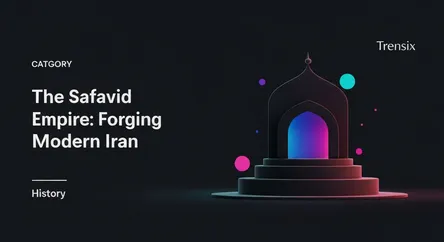History
The Safavid Empire: Forging Modern Iran

Discover the Safavid Empire, a dynasty that established Shi'a Islam in Iran, sparked a cultural golden age, and shaped modern Persian identity.
What is it?
The Safavid Empire was one of the most significant ruling dynasties of Iran, reigning from 1501 to 1736. Originating from a Sufi religious order, the Safavids established the Twelver denomination of Shi'a Islam as the official state religion, a pivotal moment in the history of Islam. At its zenith, the empire controlled not only modern-day Iran but also Azerbaijan, Armenia, and parts of Iraq, Afghanistan, and Turkey. It is often considered the beginning of modern Iranian history and classified as one of the "gunpowder empires," alongside the Ottoman and Mughal empires, for its effective use of firearms in warfare.
Why is it trending?
The Safavid Empire remains a topic of historical interest due to its profound and lasting legacy. Its most significant impact was establishing Shi'a Islam as the state religion, which created a distinct religious and political identity for Iran, setting it apart from its Sunni neighbors. This decision continues to influence the geopolitical dynamics of the Middle East today. The era, particularly under Shah Abbas I, is also renowned for a great flourishing of Persian art, architecture, and culture. Isfahan, the capital, became a center of artistic achievement, leaving behind iconic monuments that still symbolize Iran's rich heritage.
How does it affect people?
The Safavids' policies fundamentally shaped the identity of the people within their realm and beyond. By enforcing Shi'ism, they forged a unified national consciousness among diverse ethnic and linguistic groups, laying the groundwork for the modern nation-state of Iran. This religious unification also created deep divisions with the Sunni Ottoman Empire, leading to centuries of conflict that impacted countless lives. For the people of the empire, the Safavid era brought about a centralized administration, economic revival through trade routes like the Silk Road, and a cultural renaissance that produced some of the most celebrated examples of Islamic art and architecture.